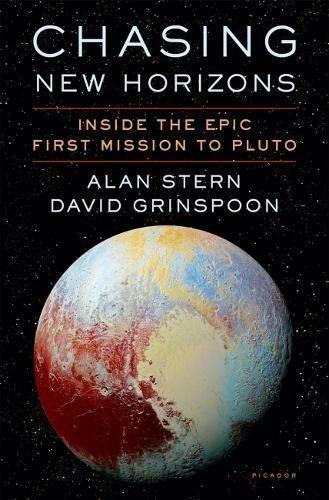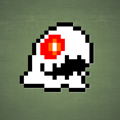A wonderful book about a wonderful mission to an amazing world (that is not a planet, by definition).
5 stelle
An excellent book about the mission to explore Pluto. Starting with the initial desire of Alan Stern to explore Pluto, the book then looks at the bureaucratic, political and technological hurdles the New Horizons mission had to overcome before being built and launched, followed by the mission itself and finally the fly-by of Pluto and the amazing discoveries New Horizons made about the world and beyond.
Chapter 1 looks at the early life of Alan Stern, who was fascinated with space from an early age and wanted to get involved in the space effort. This he does with an education in orbital mechanics and space engineering. But his fascination with Pluto would start when his advisor gives him a problem on Pluto to work on. A brief history on the discovery of Pluto itself is covered, as well as the space probes Voyager 1 and 2 and the decision that …
An excellent book about the mission to explore Pluto. Starting with the initial desire of Alan Stern to explore Pluto, the book then looks at the bureaucratic, political and technological hurdles the New Horizons mission had to overcome before being built and launched, followed by the mission itself and finally the fly-by of Pluto and the amazing discoveries New Horizons made about the world and beyond.
Chapter 1 looks at the early life of Alan Stern, who was fascinated with space from an early age and wanted to get involved in the space effort. This he does with an education in orbital mechanics and space engineering. But his fascination with Pluto would start when his advisor gives him a problem on Pluto to work on. A brief history on the discovery of Pluto itself is covered, as well as the space probes Voyager 1 and 2 and the decision that would lead to Pluto being the only object not visited by the Voyager probes.
Chapter 2 covers the early discoveries about Pluto, from its moon, Charon, to its chemistry. These discoveries would reveal what a strange world Pluto was. This would galvanize Stern to organize a group of mainly young scientists into advocating for a mission to Pluto at NASA.
Chapter 3 looks at the early period of Stern and colleagues' numerous proposals and studies for proposed missions to Pluto. This was a period of ups and downs when they put in a lot of work, pull strings and generally navigate the various political and bureaucratic hurdles to keep the plan for a mission to Pluto alive. But it would appear to come to nothing when NASA's then administrator says enough is enough and halts all plans for a Pluto mission.
Chapter 4 looks at the aftermath of that decision. A public campaign to restart a Pluto mission gets under way. NASA finally relents and agrees to a Pluto mission. That decision starts a challenge as various teams, including one led by Stern, must now submit detailed proposals for the mission and do it within months (instead of the usual years). The pressure to perform is incredible, and it would all come down to a final phone call from NASA when Stern finally learns that his proposal has won the day. It was during this proposal period that Stern comes up with the name for the mission: New Horizons.
Chapter 5 sees several more political and bureaucratic obstacles blocking the New Horizons project. Its budget is cancelled, then restored, on condition that it got top priority for a top NASA review. This, it does, only for other obstacles to appear until, finally, the go ahead is given to actually start putting the mission together.
Chapter 6 looks the building of the New Horizons probe. The logistics of preparing for the mission is covered, followed by an overview of the instruments New Horizons would carry to Pluto. But logistical and technological problems would appear, and the mission was in danger of coming in over budget and delayed, killing the mission. It would need a project manager to see the danger the mission was in and convince NASA to provide help to overcome the issues.
Chapter 7 looks at the nuclear power supply used by New Horizons and the challenges it brings to the project; in getting the needed plutonium for the power supply and in answering the necessary environmental impact studies required for any nuclear-powered mission in an extremely short time. But in the end, it all comes together, and the mission is now ready to be launched.
Chapter 8 covers the decision to launch New Horizons. Just when New Horizons was to be certified ready to fly, an external event occurs that would throw the launch in doubt: a test of a rocket fuel tank by the manufacturer of the rocket used to launch New Horizons fails. That starts to create doubts about the rocket used for New Horizons. The final meeting held to decided whether to launch New Horizons or not would come done to whether the head of NASA would agree to the launch or not. In the end, it was decided to go ahead with the launch.
Chapter 9 covers the preparation for the actual launch itself. It is not without drama: two aborted attempts were made before New Horizons is finally launched on its way to Pluto. Before that, the book describes the various decisions taken by mission control, the deep space tracking network, etc. before it could be launched. The launch itself was a success.
Chapter 10 describes the shake-down and testing done on New Horizons during the first phase of its journey to Jupiter before going on to Pluto. Huge emphasis is placed on making sure there are no mistakes in the code sent to New Horizons because any mistake, as shown by the list of previous missions that had failed, would be fatal. Some problems would be encountered, but on the whole, they are able to overcome them.
Chapter 11 looks at the planning done for the Pluto flyby itself. This planning was intensive and involved juggling many conflicting factors, as demands are made on flyby timing, instruments used, the power involved, etc. Each change in one factor would cause cascading changes in others. But in the end, a flyby plan was decided upon. Now, to execute it.
Chapter 12 looks at concerns over the safety of the New Horizons probe as it approaches Pluto over as yet unknown hazards (like extra moons or rings). Fail-safe options were developed that would return some data before New Horizons' closest approach so that some information would be obtained in the event the probe is destroyed during the encounter. Other options to shield the craft from potential debris (and still give some science observations) were also developed.
Chapter 13 looks at the plans for New Horizons to observe and fly-by other objects after Pluto. Now, as New Horizons approaches Pluto and is woken from hibernation, the excitement over the fly-by begins to build. New observations using New Horizons' instruments determine that there were no known hazards in its path, and it is go for approach with full science observations.
Chapter 14 looks at the events leading up to the encounter, when the loading of the observation program to New Horizons causes an error and loss of communication. It is only when the backup system re-establishes contact that the cause of the error is known for certain. Now, with time to fly-by ticking away, the team has to reboot the main computer, and reload the program without causing any other problems and all in a matter of days. In the end, it was done with hours to spare, and New Horizons is ready for its flyby.
Chapter 15 looks at the initial images and data returned by New Horizons prior to fly-by, and they caused a sensation. The 'heart' of Pluto and other geological features are revealed, showing Pluto to be an amazing world. All of it heightens the excitement as New Horizons breaks contact with Earth to perform its fly-by observations, and the Earth holds it breath.
Chapter 16 covers the events when New Horizons contacts Earth again, to the delight of observers, with a full suite of data. As the data is downloaded and revealed, they show Pluto to be a world unlike any other, with features and properties unlike any other world in the Solar System. New Horizons would prove to be a sensational success.
Chapter 17 looks at New Horizons after the Pluto fly-by. Its primary mission accomplished, New Horizons is now prepared for its next encounter with another object on New Year's Day, 2019, and afterwards, performing observations on interstellar space, joining the Voyager probes.


